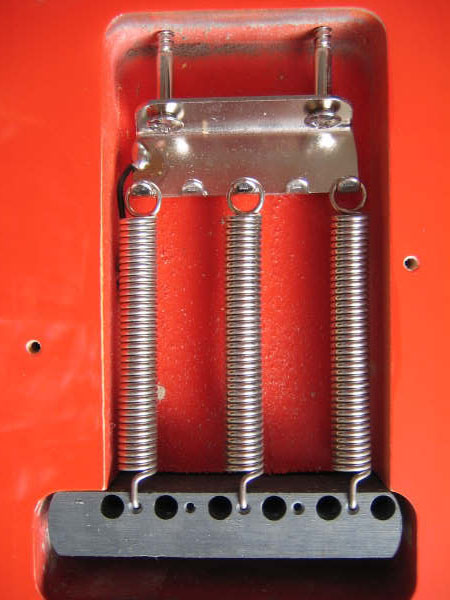
By Ed Malaker
Posted 05/12/2012
HBS READER QUESTION:
Can you please tell me the whats and hows of the claw mounting screws on the tail of the bridge? That is, when you’re putting a screw in and the thread of the screw is facing the neck and the head of the guitar, and the head of the screw is facing the rear of the body. I have some adjusting to make with the action and need to adjust each string to the curvature of the neck. I have a pretty clear understanding of how to do this, but have not yet gotten the idea of the claw mounting screws mentioned.
I’m sure that once I get to working on it I will have a clear understanding of their purpose, but I just want to be very careful, as I can’t afford to take my guitar to a shop and pay the going rate on a project like this, and of course, can’t afford to damage my guitar. I’m pretty handy and I’m sure that this isn’t beyond my ability. I just feel better about asking the stupid questions rather than stressing over them and/or damaging my Strat.
Thanks to all who provide this information online for all of us in need!!!
Sincerely,
Mark
ANSWER:
Hi Mark, thanks for your question. The good news is: there’s not too much going on there. These screws hold in what is known as the “claw.” That odd piece of metal is what the tremolo springs hang onto. I know this is all very obvious, but I just wanted to provide a little context.
So, all that said, the main effect that these claw mounting screws have is on the tension of the tremolo bridge. When you loosen these screws, the bridge will tend to lean towards the neck. When you tighten them, the bridge tends to lean away from the neck, ultimately laying flush against the body. For the most part, you don’t have to consider these screws when setting your action; string height will be mostly affected by the height of the saddles and the tilt of the neck.
Adjusting these screws can make for a slightly more slinky (i.e. “loose”) feel, or more tension. There is a small range where you can tweak as you like, to suit your taste, but too tight and you pull the bridge all the way back; too loose, and the guitar will be pretty much unplayable. So, I recommend that you set your action as you need, and then you can tweak the claw screws. You’ll want to find that “sweet spot” that provides the kind of string tension that you are looking for.
Don’t concern yourself too much with these claw mounting screws. Set them so that your string tension feels right, and then you can pretty much leave them alone.
If you’ve found this article helpful, please feel free to share this with your friends on Facebook and Twitter. For more articles on guitar electronics, visit humbuckersoup.com.
